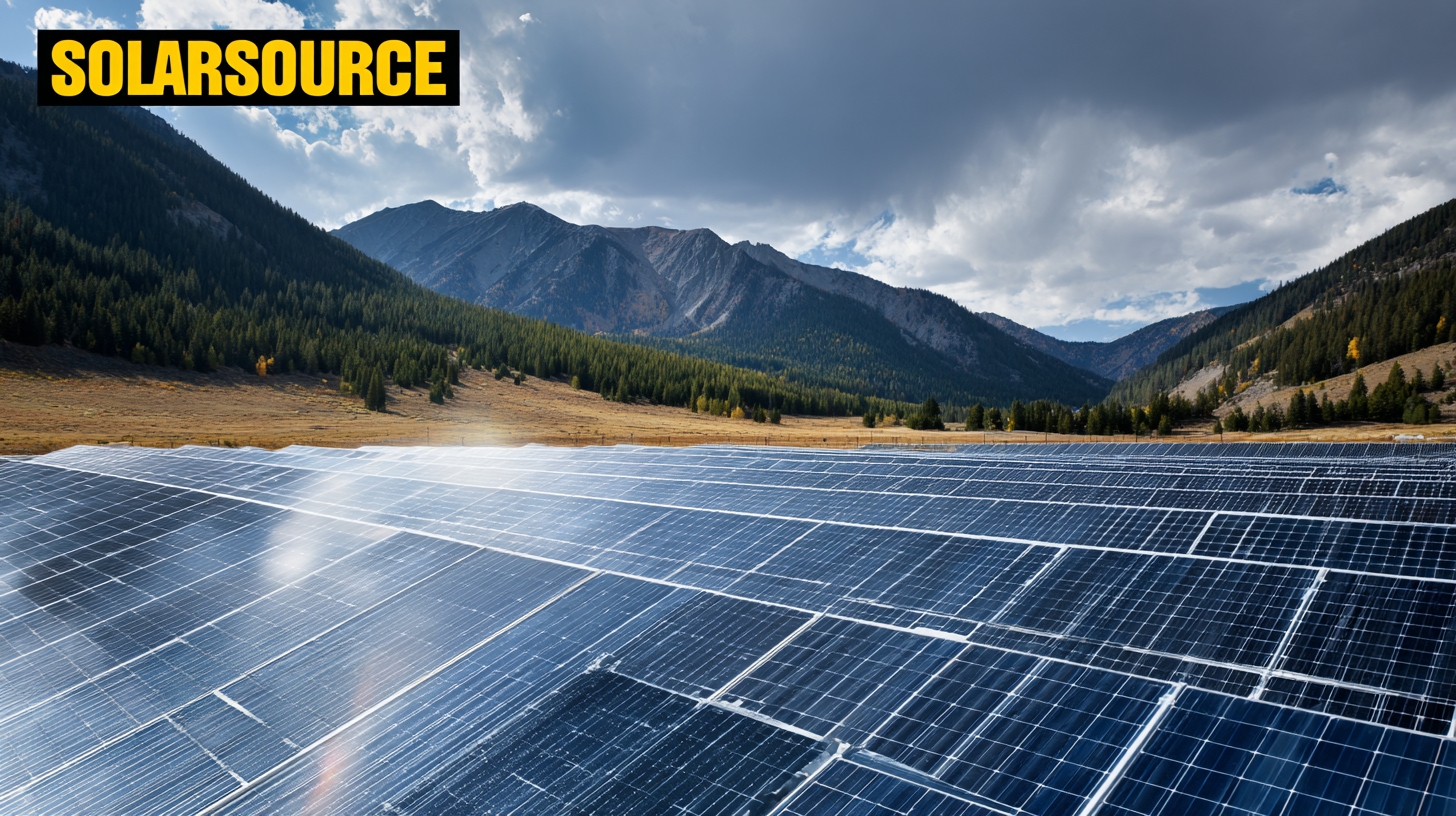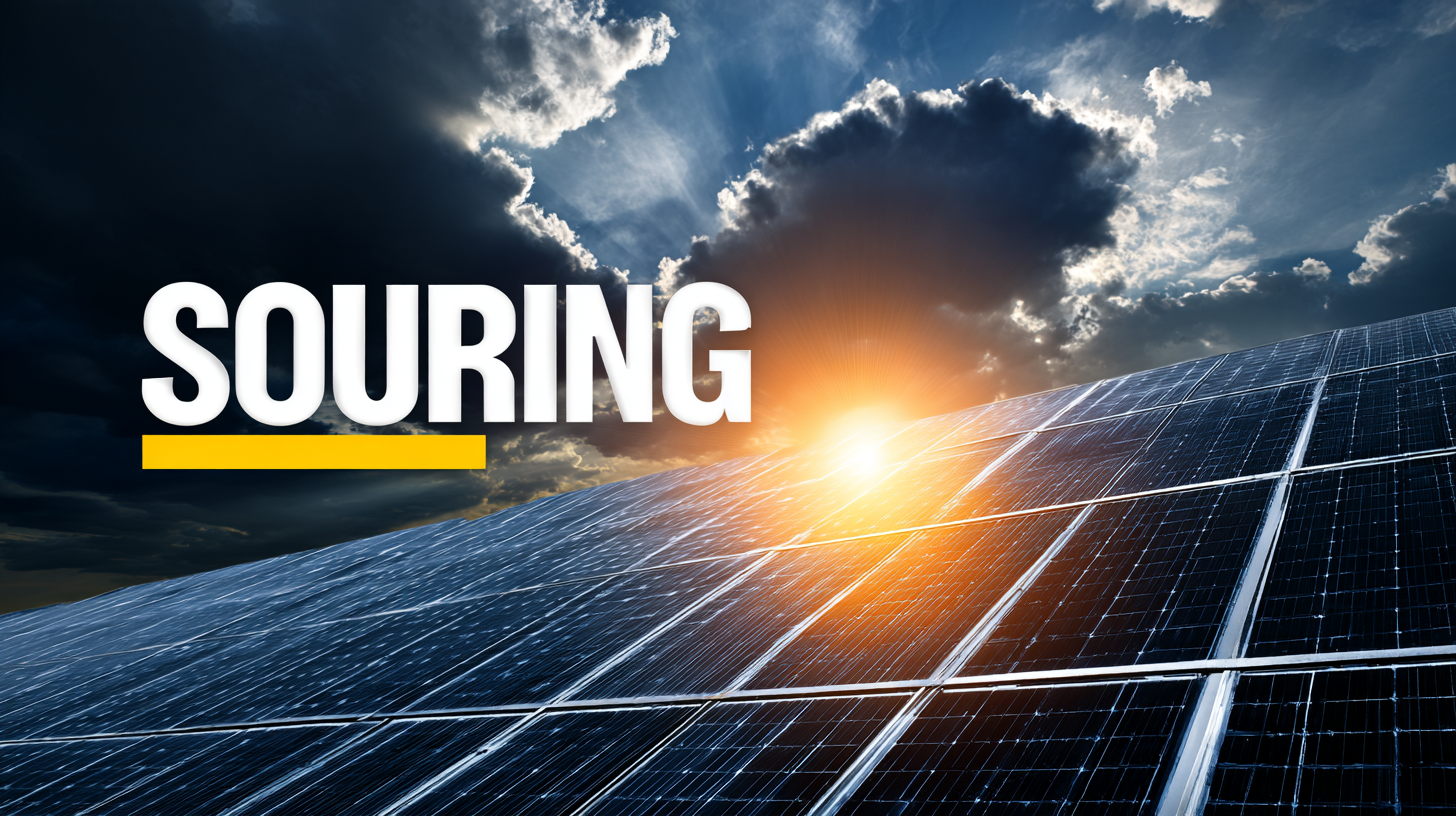
Top Strategies for Sourcing the Best Solar Panels: Maximizing Efficiency and ROI in Renewable Energy
In an era where renewable energy is at the forefront of global sustainability efforts, sourcing the best solar panels has become a critical focus for both residential and commercial investments. According to the International Energy Agency (IEA), solar power has emerged as the fastest-growing source of electricity, with installations projected to increase by more than 600 GW annually by 2025. With this surge in demand, the importance of maximizing efficiency and return on investment (ROI) cannot be overstated. Effective strategies for sourcing high-quality solar panels not only enhance energy production but also contribute to significant cost savings over time. A report from Bloomberg New Energy Finance indicates that the next generation of solar technology can improve energy conversion efficiencies to over 24%, further underscoring the urgency for stakeholders to adopt best practices in solar panel acquisition. Thus, navigating the complexities of the solar market is essential for harnessing the full potential of this renewable energy source.

Key Factors to Consider When Selecting Solar Panels for Your Project
When selecting solar panels for your project, several key factors should guide your decision-making process. First, consider the efficiency ratings of the panels. Higher efficiency means that more sunlight can be converted into electricity, maximizing your energy output. Look for panels with efficiency ratings above 20% for optimal performance. Additionally, consider the warranty offered by the manufacturer; longer warranties often indicate better reliability and quality.
Another critical aspect is the type of solar panel technology. Monocrystalline panels are typically more efficient and space-saving, whereas polycrystalline panels may be more cost-effective but with slightly lower efficiency. Evaluating your budget alongside the technology will help ensure that you find a balance between upfront costs and long-term returns.
Finally, it's essential to research and select trusted brands known for their durability and performance. Read customer reviews and compare independent test results to identify reputable manufacturers. Building a solid understanding of these key factors will ultimately lead to a more informed choice, enhancing your project's overall return on investment.
Evaluating Manufacturer Credentials: Ensuring Quality and Reliability
 When sourcing solar panels, evaluating manufacturer credentials is crucial in ensuring both quality and reliability. Start by investigating the manufacturer's history and reputation in the industry. A well-established company with years of experience is more likely to deliver superior products backed by a solid track record. Look for certifications from reputable organizations, such as the International Electrotechnical Commission (IEC) and Underwriters Laboratories (UL), which indicate that the panels have met specific performance and safety standards.
When sourcing solar panels, evaluating manufacturer credentials is crucial in ensuring both quality and reliability. Start by investigating the manufacturer's history and reputation in the industry. A well-established company with years of experience is more likely to deliver superior products backed by a solid track record. Look for certifications from reputable organizations, such as the International Electrotechnical Commission (IEC) and Underwriters Laboratories (UL), which indicate that the panels have met specific performance and safety standards.
Additionally, consider the warranty offered by the manufacturer. A longer warranty period often reflects the company's confidence in the durability of their products. It's also beneficial to read customer reviews and conduct research on the manufacturer’s after-sales service. Engaging with other customers can provide insights into the manufacturer's responsiveness and support, which are essential factors for the long-term performance of your solar investment. By thoroughly vetting manufacturers based on these criteria, you can make informed decisions that maximize both efficiency and return on investment in renewable energy.
Understanding Different Solar Technologies: Which Type is Right for You?
When considering the adoption of solar energy, understanding the different solar technologies available is crucial in determining which type best suits your needs. The two primary types of solar panels are monocrystalline and polycrystalline. Monocrystalline panels are made from a single crystal structure, which allows them to achieve higher efficiency rates—often exceeding 20%. These panels are known for their sleek aesthetics and compact design, making them ideal for homeowners with limited roof space.
On the other hand, polycrystalline panels are created from multiple crystal fragments melted together, leading to lower manufacturing costs and slightly reduced efficiency, typically ranging from 15% to 17%. They are an excellent option for those looking for a more budget-friendly solution and who have ample roof space to accommodate the larger panel sizes. Additionally, thin-film solar technology offers flexibility and lightweight properties, making it suitable for various unconventional applications, such as on vehicles and large surfaces. Evaluating these technologies based on your energy needs, budget, and space will help you maximize both efficiency and your return on investment in renewable energy.

Cost-Benefit Analysis: Calculating ROI for Solar Panel Investments
When considering solar panel investments, conducting a thorough cost-benefit analysis is crucial for understanding the potential return on investment (ROI). Evaluating the initial costs—such as purchase price, installation fees, and any maintenance expenses—against the long-term savings on energy bills will provide a clearer financial picture. It's important to factor in local electricity rates, potential government incentives, and even the projected lifespan of the solar panels, which can significantly influence overall savings.
In addition to immediate costs and savings, assessing the financial impacts of solar energy should include the environmental benefits of reduced carbon emissions and energy independence. These qualitative aspects can enhance the perceived value of your investment. By calculating the payback period, or how long it takes for your initial investment to "pay back" through savings, homeowners and businesses can make informed decisions. A well-rounded cost-benefit analysis not only elucidates the potential financial gains but also aligns your investment with broader sustainability goals, ensuring that you maximize both efficiency and ROI in the burgeoning world of renewable energy.
| Panel Type | Efficiency (%) | Cost ($/W) | Lifespan (Years) | Estimated Annual Output (kWh) | ROI (%) |
|---|---|---|---|---|---|
| Monocrystalline | 20.5 | 2.50 | 25 | 1,500 | 16% |
| Polycrystalline | 18.0 | 2.00 | 25 | 1,350 | 14% |
| Thin-Film | 14.0 | 1.50 | 20 | 1,200 | 10% |
| Bifacial | 22.0 | 2.80 | 30 | 1,800 | 18% |
Strategies for Sourcing High-Quality Solar Panels from China and Beyond
When sourcing high-quality solar panels from China and beyond, it's crucial to prioritize both efficiency and cost-effectiveness. First, establishing strong relationships with reputable manufacturers can significantly enhance your procurement process. Engage in thorough research to identify established companies with a proven track record in solar technology. Investigate their manufacturing practices, certifications, and past performance in international markets to ensure reliability and adherence to quality standards.
Moreover, leveraging technology can greatly streamline the sourcing process. Online platforms that specialize in renewable energy materials can provide access to a wide range of suppliers and product comparisons. Utilizing digital tools for project management and communication can enhance collaboration with suppliers, facilitating a smoother negotiation process. Implementing a comprehensive due diligence process, including factory audits and quality checks, can help mitigate risks associated with sourcing from overseas. By strategically navigating the global market, you can secure the best solar panels that will maximize efficiency and ROI for your renewable energy projects.
Solar Panel Efficiency and ROI Analysis
This chart displays the efficiency and return on investment (ROI) for various types of solar panels. Efficient sourcing of high-quality solar panels can enhance performance and maximize financial returns.
